 Vera Farmiga in The Conjuring 2, which reportedly uses infrasound
Vera Farmiga in The Conjuring 2, which reportedly uses infrasound
In the early 1980s, Vic Tandy was one of the members of the medical development team. equipment in the laboratory of Coventry University. Everyone said the lab was haunted; it was just weird. That evening, when Tandy was alone, he felt something very strange.
“I was sweating, but I was cold, and there was a noticeable feeling of depression – but there was something else,” he told the Birmingham Post at the time. Suddenly he felt that he was being watched. «Like there was something in the room with me.»
A grayish figure appeared at the edge of his field of vision. The temperature has dropped. When he turned to look at the figure, it was gone. «There was absolutely no evidence of what he saw, so he figured he must have gone crazy and went home,» Tandy and his colleague Tony Lawrence wrote in a 1998 article about the incident.
Tandy was a man with many interests. He became a lecturer in information technology at Coventry University and was an engineer, but was also an avid magician and member of the Leamington and Warwick Magical Society. In his free time, he had time to take up fencing. Another strange thing happened in the same laboratory the other evening.
His fencing rapier was clamped in a vise on a table in the middle of the room. Nothing else touched it, but slowly at first, then faster and faster, the blade began to vibrate up and down. Intrigued, Tandy began investigating and discovered a new exhaust fan near the lab. He sent rumbling low-frequency sound waves at 18.9 hertz into the laboratory, which were reflected and focused where his foil was pinched.
Frequency of ghosts
These frequencies were below the range that the human ear can hear, but Tandy theorized that these low-frequency sounds, known as infrasound, the polar opposite of high-frequency, high-frequency ultrasound, were the cause of his experience. In another investigation a few years later, Tandy discovered that an apparently haunted 14th-century cellar under the Coventry Tourist Information Center focused 19 hertz infrasound from a nearby fountain's pump.
“Finding exactly the predicted frequency was amazing, and the experiment was repeated several times to make sure that this was not an anomaly in the equipment. While he doesn't want to rule out other subsonic frequencies, obviously 19 Hz should be of particular interest,” he wrote in a 2002 article titled “Something in the Basement.”
Tandy and Lawrence hypothesized that 19 hertz frequencies—the invisible, inaudible waves that seep through buildings, the ground, and into our bodies—may cause those who are exposed to experience what they perceive as a ghost. Since their work, the so-called «ghost frequency» has been a myth: some say it can make you vomit, run out of the room, or cause you to tremble and sweat.
The newspaper even speculated that it could make you see ghosts, citing a NASA report that found the resonant frequency of the human eyeball to be 18 hertz. “If this were the case, then the eyeball would vibrate, which would cause severe blurring of vision,” says Tandy and Lawrence in the first Ghost in the Machine article in 1998. shapes caused by something as innocent as the angle of [Tandy's] glasses.”
But that's not all that infrasound is reputedly capable of. In 2003, director Gaspar Noé admitted that he added low frequencies to the scenes of his film Irreversible in order to confuse the audience. “You don’t hear it, but you are shaking. In a good movie theater with a subwoofer, you may be more intimidated by the sound than what is happening on the screen. Many people can capture images but not sound. These reactions are physical.»
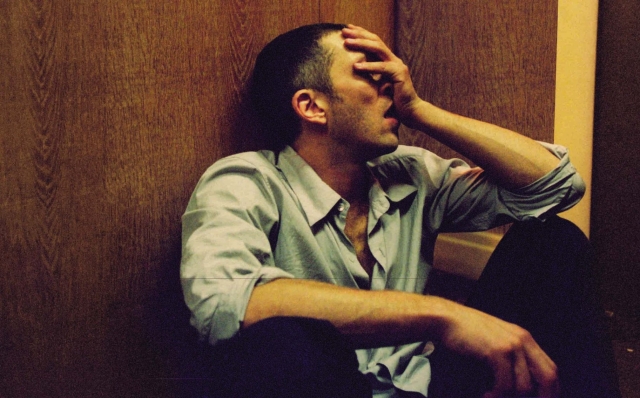 Worrisome: Gaspard Noé added 27 hertz to Irreversible. Photo: Moviestore Collection Ltd/Alamy Stock Photo
Worrisome: Gaspard Noé added 27 hertz to Irreversible. Photo: Moviestore Collection Ltd/Alamy Stock Photo
Some moviegoers on Reddit recalled feeling nauseous and jittery while watching Irreversible, though this may have been due to graphic sequences in which characters are sexually assaulted or beaten to death with fire extinguishers rather than any «fear frequency» . However, Noé is not alone in using high frequencies to scare audiences: Paranormal Activity and The Conjuring 2 are rumored to have used infrasound, as was the zombie movie Battery. But how does infrasound work?
Human speech has a frequency between 500 and 2000 hertz, and the lowest C note on an 88-key piano is just under 33 hertz. Infrasound, explains Dr. Trevor Cox, head of acoustic research at the University of Salford, is generally considered to be below 20 hertz. Noé added a frequency of 27 hertz to Irreversible, so technically it's not infrasound. “But most importantly in terms of perception, your ear can still pick it up. It just has to be very loud to be heard.”
In our daily life, infrasound is created by a variety of things: large engines and fans, washing machines, thunderstorms. Tandy was not the first to explore infrasound: Moscow scientist Vladimir Gavro's experiments in the 1960s led him to speculate that the Soviet Union created a giant 10,000-watt acoustic resonator to kill enemies with silent sound. «There's a catch,» William S. Boroughs noted in a 1968 National Enquirer article. «Currently, the machine is just as dangerous for its operators as it is for the enemy.»
Not everyone is sensitive to infrasound. Whether you have hearing or not depends partly on how good your hearing is and partly on your natural sensitivity. «So some people can hear it, some people can't, and it's just a natural variation.»
Tandy died suddenly in 2005 at the age of 50. But two papers he and his colleague Tony Lawrence published in 1998 and 2003 that theorize that infrasound could explain ghost reports live on as other scientists explored them. Ciarán O'Keeffe, parapsychologist and head of the School of Humanities and Social Sciences at Buckinghamshire New University, is one of them. «You've felt the effect of sound on your body before,» he says.
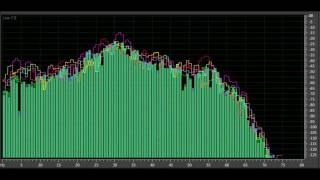
«Imagine you're in a club and there's very deep bass coming through the speakers and you're relatively close to the speakers,” O'Keeffe says. «And you can hear the beat, but you can actually feel it in the pit of your stomach.»
Add subsonic frequencies and other effects will appear. “There may be some heaviness in the head or in the ears. Some people even report that the hairs on the back of their necks stand on end, as well as a sense of presence.
Sarah Engliss is a composer and sound designer who has used infrasound in theater productions and has an engineering background. «It's a very strange feeling when you're in a room where there's infrasound, because it's a sound that you feel rather than hear,» she says. “It's like it penetrates your body, you almost feel it on your skin and you are aware of it. If it's loud enough, if it's powerful enough, you get the feeling that the air is alive in a certain way.»
It's not like it's a portal to the underworld. “If you expect to see a dead uncle in the room or something like that, then this is not at all the case,” she says. “I mean it's really a minor effect. It's like a small addition to the room, a slight feeling of something special in the room. It feels like the room is electrifying.”
In 2003, Angliss and O'Keeffe collaborated to test Tandy's theory. “I started to realize that all the organ builders around the world are building such long pipes and their bass frequency is in the subsonic range,” says Angliss. These pipes were huge and required huge bellows and engineering to force enough air through them to produce a sound no one could actually hear.
“So the question is, if this sound is trash sound – stuff we don’t need to think about because it’s outside of human hearing – why did people go to such extraordinary small steps to build these pipes?”
< img src="/wp-content/uploads/2023/08/265d40176a3c9f8dc4108738f11e91de.jpg" />Paranormal activity is believed to involve infrasound. Photo: Everett Collection Inc/Alamy Stock Photo
They both went to St Albans Cathedral to investigate. “It just didn’t make any sense why these pipes were being built. But when Sarah and I were at St Albans Cathedral and asked the organist to play the infrasonic trumpet, you could feel the added intensity of the music. You could feel it in your body.”
Angliss felt it too. «These very, very deep pipes were put in to create that beat, some kind of beat in the music, a fall where you feel the thrill in the cathedral.»
She, along with the National Physical Society Laboratory, helped design and build an infrasound machine in a barn in Sussex, using a 23-foot piece of corrugated plastic sewer pipe as her own organ pipe to create resonance at a frequency of 17.5 hertz. When they turned on their «acoustic gun», strange things began to happen: the strips of light in the shed vibrated, and the furniture trembled slightly. The room was almost silent.
Oddly enough, one of the best low-tech ways to detect the presence of infrasound is to light a candle and watch its flame flicker and tremble. “I used to go around and demonstrate it [the gun] and [it was] very, very interesting to take a candle, just walk around the room and see the candle flicker as you move in the antinodes of the signal, and a little flapping of paper or a slight vibration of a chair, and you really felt it on your chest.”
Not everyone was interested in the experiment. Angliss recalls that he had «a whole bundle of e-mails, equivalent to letters in green ink, from physicists who said that I should not conduct an experiment for ethical reasons,» and a salesman at an audio store on Tottenham Court warned him to investigate infrasound. Road.
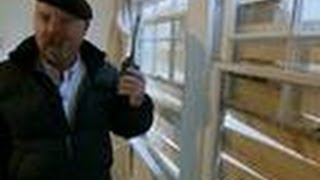
“He said you really shouldn't mess with brown noise. It was like, «Don't do drugs» — like, you don't know what you're getting into. It's like a classic horror movie opening. It was fun.”
Undeterred, says O'Keeffe, they «hit infrasound at the unsuspecting audience in the Royal Festival Hall to test the theory.» On May 31, 2003, they brought an acoustic cannon to the Purcell Room at the Southbank Centre, where they performed two concerts in one day, mixing live piano pieces with some of Angliss's electronic pieces. However, to the music, O'Keeffe mixed the sounds of the cannon at different points in each performance. The audience filled out questionnaires, detailing their feelings during the performances.
«What was quite obvious,» says O'Keef, «is that people had emotional reactions to the music, of course, regardless on whether infrasound was present or not. Infrasound seems to increase the intensity of the emotional response.”
This helped O'Keeffe and his colleagues to conclude that Tandy's idea was intriguing but imperfect. «Vic Tandy had a really interesting theory, which I really like, but in fact his theory that 19 hertz is responsible for the experience of ghosts is not currently supported among parapsychologists.»
At ghosts and poltergeists a lot of them. reasons, he says. «It's a contributing factor, but we can't say it's the cause of all the haunting experiences.»
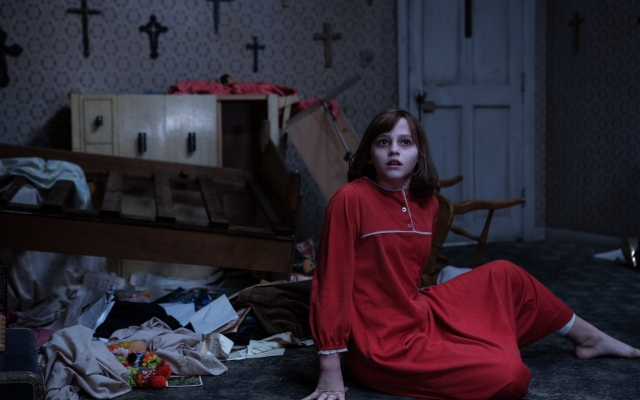 Madison Wolfe in infrasound film The Conjuring 2 By Matt Kennedy
Madison Wolfe in infrasound film The Conjuring 2 By Matt Kennedy
Many ghosts occur before sleep or at night, and «they are easily explained by the state between wakefulness and sleep, hypnagogic effects,» says O'Keeffe. The two most important factors are psychology and the environment in which a person is.
“If you walk into a place that I told you is haunted and you feel a breeze on the back of your head, maybe you will look around and think, was it a ghost just following me? Unlike the situation when you are in an office building and you feel the breeze on the back of your head and look for an open window or air conditioning duct.
A laboratory late at night or a creepy medieval basement will elicit a reaction. “It influences your interpretation of what is happening. So imagine feeling the physical effect of infrasound in St Albans Cathedral and then interpreting it as a sense of depth — a sense of awe here in the cathedral. Now, in a ghostly context, according to Vic Tandy's theory, you feel infrasound, you can't attribute it to any source, it affects you physically, and you think: well, maybe it's a spirit, maybe there's a ghost here. /p>
At a concert in the Purcell Room, something similar was supposed to happen. «It's the same thing: for people who have an emotional reaction to music, this reaction will not change, but the intensity of the reaction will change.»
Cox notes that infrasonic frequencies can penetrate most places you might try to experiment: «It's very difficult to do controlled experiments at these very low frequencies, because any place you go in will almost certainly be bathed in infrasound from other sources. ”.

Another problem is that after the surge in funding, when Defra tried to get to the bottom of the annoyance of infrasound and ultrasound around the turn of the 2010s, few scientists returned to the topic. “To be honest, there wasn’t that much experimentation,” says Cox.
However, Angliss has used infrasound in her work, including in her production of The Twilight Zone in Almeida, and she still experiencing the excitement of the first study of infrasound. “It was like opening an amazing door. My God, I just couldn't believe what I found. There are all these teasing things.”
I want to experience these teasing things too, so I open one of the many videos on YouTube supposedly sending a «fear frequency» at 19 hertz. The commentary on one 12-hour video makes it especially promising. «I'm listening to this right now and well… as soon as I put it [sic] the vanity [sic] in my face started to sway as I type this, I'm a little hard to breathe, this thing is pretty cool, I'm starting something-» then see my legs vibrate. It's disgusting.”
I plug in the AirPods and wait for something to happen. There is a quiet rustle, similar to interference in a telephone line. I sit in the kitchen waiting for a visit for a good 15 minutes before admitting it's not happening. No tingling in the back of the head, no cold sweat, no ghosts. It turns out that playing a very compressed YouTube video on my laptop's tin speakers in a bright, tidy apartment at 8 am doesn't have the same presence and effect as a giant organ in a creepy basement in the dead of night.
It doesn't look like there are ghosts in my car. But there are still machines that can silently send infrasound into your house, shake your eyeballs, and (possibly) send shivers down your spine.










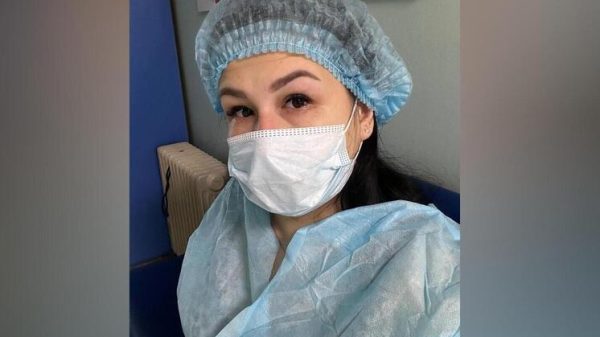















































Свежие комментарии